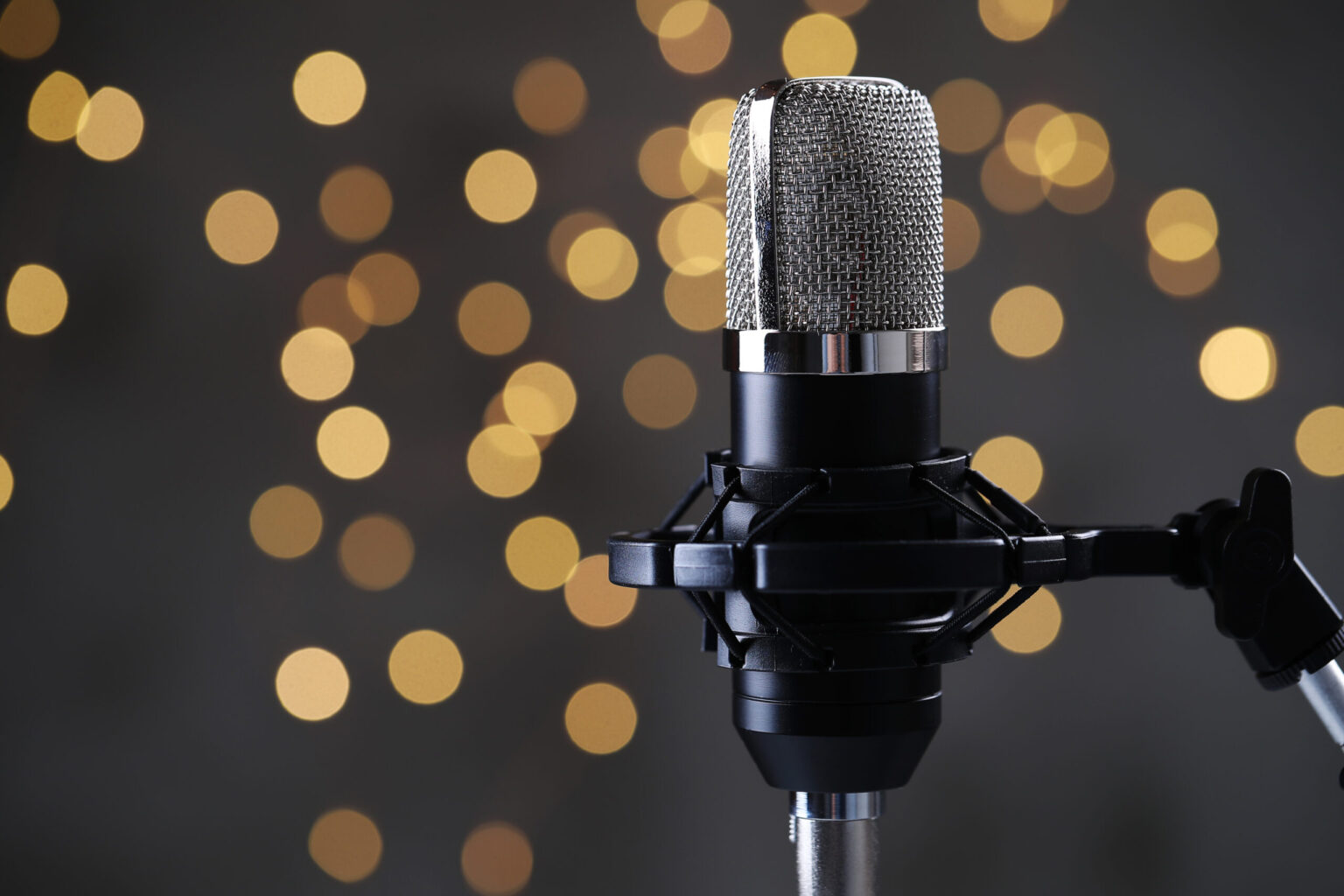Close your eyes and imagine this scenario: you are a distinguished guest at a high-profile event, and it’s your moment to shine on stage. The crowd hushes down, and you’re ready to deliver a well-prepared speech. The moment your lips near the microphone, however, it emits a screechy, loud noise, causing discomfort to you and the audience. Suddenly, your whole presence on the stage is overshadowed by poor sound quality, all because of the wrong mic. In the world of sound recording, choosing the appropriate mic can greatly affect the quality of your audio. Exploring the variety of microphones can not only improve your sound quality but also prevent unwarranted audio mishaps. Below, we dive into the different types of microphones, their unique features, and their uses.
The Evolution of Microphones

Believe it or not, the history of microphone technology is as captivating as the device itself. The microphone was invented in the 19th century by eminent scientists of that era. The first mic was essentially a transmitter, which used a thin foil diaphragm to receive sound waves. Achievements of many inventors and companies over the years have since contributed to the modern, polished versions we use today. The original carbon button microphone was transformed through digitization into electret microphones, which significantly enhanced the sound quality.
Later, the ribbon mic gave artists and radio jockeys the freedom to record more naturally. But it was fragile and required careful handling. As technology improved, the dynamic microphone came into play. Sturdy and reliable, it was quickly adapted for use in live sound reinforcement. The evolution of mics continues today with highly-engineered devices like the condenser microphone and the lavalier mic. A good lavalier mic, for example, offers superior sound quality for professional use.
Each era presented new demands for sound quality and the need for microphones to handle varying acoustical environments. The history of microphones is filled with a constant drive for improvement, in sync with the changing platforms of communication and entertainment.
Decoding the Dynamic Microphone
The dynamic mic is the heavyweight champion in the world of sound engineering. These are known for their durability and ability to handle high sound levels, making them a popular choice for live sound environments like music concerts and public speeches. By design, dynamic devices work the same way as speakers but in reverse. As sound waves enter the device, they hit a thin metallic diaphragm connected to a coil of wire.
The movement of the coil within the microphone’s magnet creates an electrical signal identical to the sound wave. Unlike other types, dynamic mics do not require phantom power. Therefore, they are battery-free and ideal for long, unhindered use. This simple, robust design makes them resistant to moisture and provides the added benefit of excellent gain-before-feedback, making them the first line of defense for most sound engineers.
Delving Into Condenser Microphones

Looking to create a soft lullaby or a delicate violin solo? The condenser microphone might be your audio companion of choice. Condenser mics use a different transducer than dynamic ones, known as a capacitor. Here, sound waves hit a thin, metallic diaphragm, causing it to vibrate against a backplate, thereby inducing an electrical signal.
They require phantom power to function, which is usually supplied by the recording device or an external power source. This additional power supply allows for greater sensitivity to sound and broader frequency response than dynamic mics. As a result, these are exceptional at recording the delicate nuances of musical instruments and human voices and are frequently used in music studios and radio stations.
The Lavalier Microphone: Small But Mighty
You’ve seen journalists, YouTubers, and even motivational speakers wearing this small device on their shirt—it’s the lavalier microphone, often referred to as a lapel mic or clip mic. Their small size and discreet nature make them perfect for hands-free operation. Originally used in theatre to amplify actors’ voices, the lavalier microphone has found a cozy home in the fields of television, filmmaking, and public speaking.
Portable and easy to use, it provides good sound quality without the need for a handheld mic. Most lavalier microphones are condenser mics, requiring a power source, but provide an impressive frequency response. The user can move freely without worrying about sound projection. Though they are not as robust or durable as dynamic mics, their strength lies in their unobtrusiveness and convenience.
The Delicate Ribbon Mic
Imagine a thin ribbon of metal, no more than a few micrometers thick, suspended in a magnetic field. Yes, that’s the operating principle behind the ribbon mic. The ribbon’s function is like an amalgamation of dynamic and condenser mics. When the ribbon vibrates due to sound waves, an electrical signal is produced like in a dynamic mic. But the ribbon’s thinness makes it as sensitive as a condenser mic and better able to capture higher frequencies.
However, this same delicate nature makes it less suited for live sound reinforcement — a strong gust of air can easily tear the ribbon. But in the controlled environment of a studio, the ribbon mic shines, capturing vibrant and nuanced sounds of musical instruments with ease. They are cherished for their smooth, warm, and nuanced sound reproduction – a characteristic that makes them a preferred choice for the studio.
Recent advancements have made this beautiful, classic form of a mic more robust and adaptable, opening new opportunities for use in live music performances. So, despite the ribbon mic’s delicate nature, its unique sound capture capabilities have helped it find a devoted user base in the world of sound recording.
The Versatility of the Shotgun Mic
From movie sets to sports fields, the long, slender barrel of a shotgun mic is a familiar sight. Shotgun mics are designed to capture sound from a targeted area while ignoring sounds from the sides and back. This directionality is achieved by the device’s interference tube, which is a series of holes in front of the capsule.
When the sound enters the front of the device, it triggers the capsule directly. However, sound entering from the sides has a longer travel time, which results in phase cancellation. This directionality makes the shotgun mic an excellent choice for capturing sound in noisy environments or from a distance.
The Power of a USB Mic

In the digital age, the USB mic holds the power to turn an average computer setup into a mini-recording studio. These simple, plug-and-play devices are perfect for podcasting, voiceover work, music recording, or even gaming. Unlike traditional mics that require an audio interface or mixer to convert analog signals to digital, the USB mic has that technology built inside.
With a straightforward connection, these offer excellent sound quality on par with some professional-grade options and are compatible with most operating systems. They are often equipped with features like headphone jacks for real-time monitoring, gain control, and mute buttons, providing the user with practical flexibility. Plus, their streamlined design makes them an excellent choice for content creators on the go.
However, since the analog-to-digital conversion happens inside the mic, the audio quality can be impacted by the quality of the built-in components in a USB microphone. But, given their ease of use and decent sound quality, they have become an indispensable tool for budding recording artists, podcasters, and YouTubers. If you’re interested in learning more, you can check out Musician Nerd as a great resource for more information.
Overall, the world of microphones is vast and diverse. Each one, with its distinct capabilities and uses, has made an undeniable contribution to the world of sound recording. Understanding the working and features of these devices can help you pick the right tool for the job – whether it’s recording an acoustic song, making a YouTube video, or giving a speech at a conference. Considering the appropriate mic for your needs can be the crucial first step towards achieving a great audio experience.






